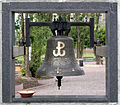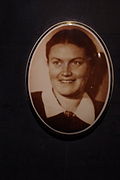Muzeum Powstania Warszawskiego | |
 Museum building | |
 | |
| Established | February 10, 1983 (opened July 31, 2004) |
|---|---|
| Location | Wola, Warsaw, Poland |
| Visitors | 416,000 (2007) [1] |
| Director | Jan Ołdakowski |
| Public transit access | |
| Website | Official website |


The Warsaw Rising Museum (Polish : Muzeum Powstania Warszawskiego), [2] [3] [4] [5] [6] [7] [8] in the Wola district of Warsaw, Poland, is dedicated to the Warsaw Uprising of 1944. The institution of the museum was established in 1983, but no construction work took place for many years. It opened on July 31, 2004, marking the 60th anniversary of the uprising. [9]
Contents
The museum sponsors research into the history of the uprising, and the history and possessions of the Polish Underground State. It collects and maintains hundreds of artifacts – ranging from weapons used by the insurgents to love letters – to present a full picture of the people involved. The museum's stated goals include the creation of an archive of historical information on the uprising and the recording of the stories and memories of living participants. Its director is Jan Ołdakowski, with historian Dariusz Gawin from the Polish Academy of Sciences as his deputy. [10]
The museum is a member organisation of the Platform of European Memory and Conscience. [11]




















